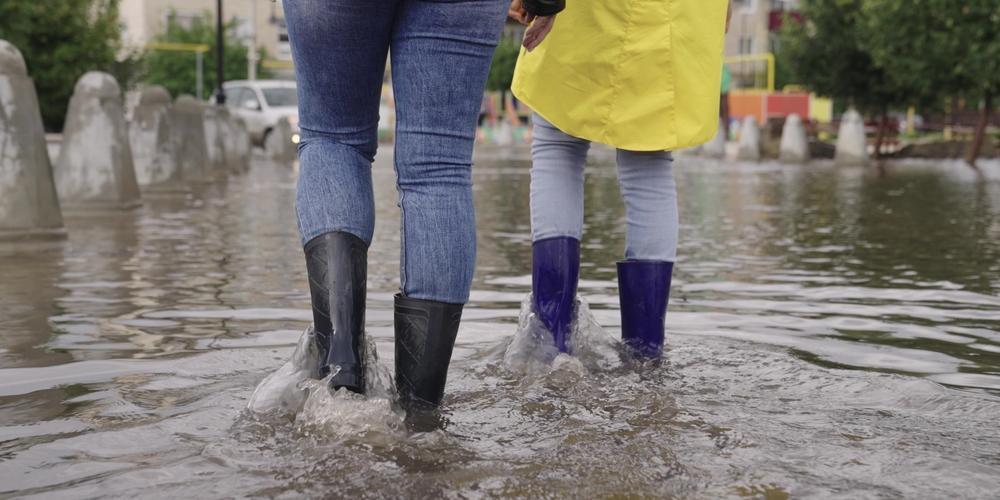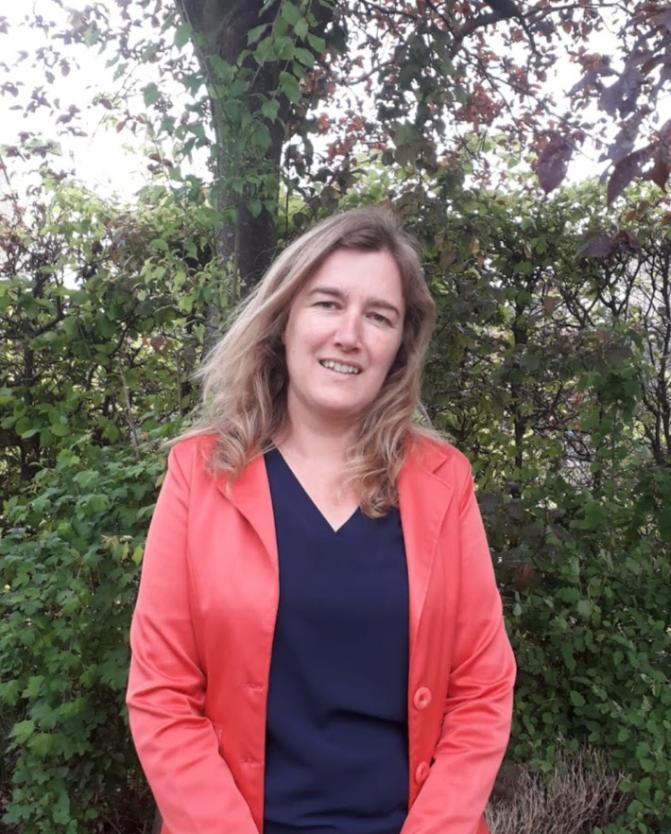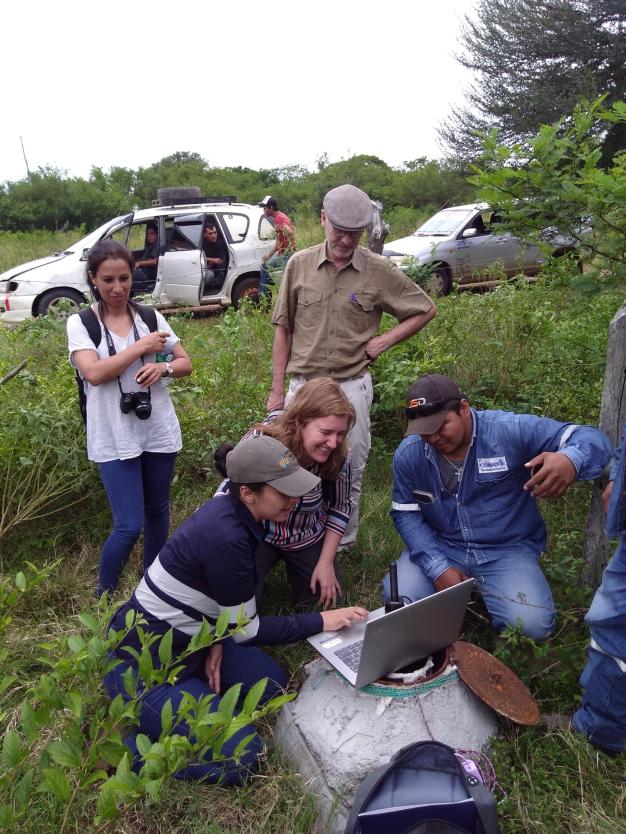
On Friday 22 March, World Water Day, the United Nations is calling attention to global water issues. We took the opportunity to ask VUB professor of groundwater hydrology Marijke Huysmans about the future of our own water resources. We are facing challenges, she says. “Due to climate change, our winters are becoming warmer and wetter and our summers hotter and drier. In Belgium, rainfall used to be spread throughout the year. In the future, we expect the same amounts of rainfall, only concentrated in autumn and winter. The big challenge will be retaining as much water as possible to get through the dry summers.”
The Yser river overflowed and thousands of basements flooded: last autumn and winter were extremely wet. What a difference from the long dry summer of 2022, when we were strongly advised against washing our cars and watering our gardens. It could have been much worse, says Marijke Huysmans. “In September 2022, we escaped a disaster scenario. It started raining just in time, otherwise the government would have had to disconnect companies from drinking water and the Albert canal and impose major restrictions on citizens.”

“Our weather is becoming more and more extreme"
Too wet, too dry: it seems there’s always an issue with our weather
Marijke Huysmans: “We’d better get used to it, because according to the climate scenarios it will probably become the new normal in this part of the world. In autumn and winter, we can expect warmer temperatures and more precipitation, with all the flooding that entails. In spring and summer, we will experience longer, more intense periods of drought. This was already the case in 2018, 19, 20 and 22. But in the summer of 2021, we had the dramatic floods in Wallonia. That’s another evolution: our weather is becoming more extreme.”
So will we have a dry and a wet season here every year?
“It’s going in that direction. Traditionally, our rainfall is more or less spread out over the whole year: in terms of litres, there is normally no big difference between summer and winter months. Now we are moving toward a climate with two halves of the year: one dry and one wet.”
What does this mean for our water supply?
“It will be a challenge. It is relatively easy to provide water if there is about the same amount of rainfall each month. If it’s dry for a long time, supplies of surface water and groundwater dwindle and we face problems. In Flanders, 50% of drinking water is extracted from groundwater and 50% from surface water. The largest source of surface water is the Albert canal, which is fed by the Meuse river. If the water level there is too low, we are in trouble. Not only for domestic tap water, but also for companies that get their cooling and process water from the canal.”
“You can’t extract water from the clay of West and East Flanders”
Why is it usually West and East Flanders that face problems first?
“In West and East Flanders, the subsoil consists mainly of clay – beneath Ypres, for example, there is a clay layer 100 m thick. Clay particles are small and tightly packed together. As a result, there is little room for rainwater to infiltrate and so the available water supply in clay is less. The Yser is also only a modest river – if the level drops, you can’t extract any more water from it. What’s more, the area has a lot of tourists in the summer, who like to take long showers after a day at the beach.”
Is water supply greater in the rest of Flanders?
“The Kempen, Limburg and part of Flemish Brabant have sandy soil – in the Kempen, the sand is hundreds of metres deep. Sand absorbs rainwater easily, so in those regions there is more water in the ground that you can pump up.”
How is the situation in Wallonia?
“A lot better. Wallonia gets 80% of its drinking water from groundwater – there’s plenty available there. The region is also less populated. In Flanders, there is a huge concentration of inhabitants, factories and agricultural activities in a very limited area. That high demand makes it a real problem area in terms of water availability.”
What is the solution?
“We need the water that falls in the autumn and winter to infiltrate the soil as much as possible so we have reserves for the dry periods.”
Historically, have we been doing the opposite?
“Yes. For centuries, the policy has been to drain water as quickly as possible. In the Middle Ages, this was done to enable agriculture, and later to create space for housing and industry. Until a few decades ago, this was a logical approach: people wanted to control the water so they wouldn’t have problems with it. To this day, about 60% of rainwater flows through rivers and sewers straight to the sea.”
And that’s not a smart idea?
“Not anymore, no. During heavy rainfall, all that water is quickly drained to one place: down in the valley. That’s asking for flooding. And in long droughts, there is not enough groundwater to serve as a buffer for nature, industry, agriculture and families. The solution to those two problems – flooding and water shortage – is the same: allow more water to infiltrate.”

“Softening alone is not going to get us there”
The big mantra then is softening, or reducing paving. Apparently, we are champions of concrete
“About 16% of Flanders is paved. That’s twice the European average. The target is to prevent additional paving by 2040. But softening alone will not get us there. For existing and new homes, buildings and infrastructure, we must also allow as much water as possible to infiltrate. There are all kinds of techniques for this, such as infiltration ditches and lanes, or wadis – gullies or ditches that serve as temporary buffers and through which water can seep into the soil.”
Getting more water to infiltrate the soil is the first step. What comes next?
“Draining the water more slowly. Pilot projects using smart systems for canals and drainage systems are under way all over Flanders. In the canals, for example, we are experimenting with adjustable dams. These hold the water when it is dry and drain it when it rains a lot. Level-controlled drainage is another promising technique. Currently, fields are often drained all year round, rain or no rain. Level-controlled drainage puts a temporary stop to that, so the groundwater level rises and the fields stay moist longer during periods of drought. Farmers drains the water only when the field gets too wet or when they have to go out into the field.”
Is that an expensive solution?
“Not at all. All the drainage pipes meet in a control pit. You can set it so that the water only flows into the stream from a certain level. That works! A farmer who uses this technique can wait several weeks longer to irrigate than their neighbours.”
Of course, using water sparingly also helps
“We must do everything we can to reduce the pressure on our natural groundwater resources. Industry has already greatly reduced its need for groundwater, through more efficient processes and by using water in a circular way. Instead of pumping groundwater, they capture rainwater and use it for applications that don’t require drinking water. And they purify and reuse their own wastewater. It’s the same story in agriculture. The mindset is changing rapidly. Before 2018, people sometimes laughed when we talked about drought or water scarcity. The dry spells of recent years have confronted everyone with the facts.”
“If everyone removes a few slabs from their yard, millions of extra gallons can infiltrate”
Can individuals also help, or is that just a drop in the ocean?
“The lion’s share of drinking water doesn’t go to agriculture or industry but to households. Those millions of households together have a huge impact. For half of all applications for which we use drinking water, we could switch to rainwater. To flush toilets, for example. You could disconnect your downpipe and connect it to a rain barrel or a small wadi in the garden. You could soften your garden as much as possible, too. If everyone removed a few square meters of paving, millions of extra gallons of water would be able to infiltrate.”
So we should be grateful for the rain of the last few months?
“The hope is that those wetter winters will replenish our water supplies each year so we can get through the drier summers without too many problems. For us, fortunately, there is still rain – the challenge is to hold on to that water. Here, at least, solutions are still possible. The climate scenarios for southern Europe look much more worrying. There the forecast is simply desiccation.”
Expert in underground water
Prof Marijke Huysmans is affiliated with the VUB’s Department of Water and Climate. Her research has always had a strong international focus, although in recent years her focus has shifted to groundwater and drought in Flanders. With her team, she develops computer models that can predict how groundwater will behave.